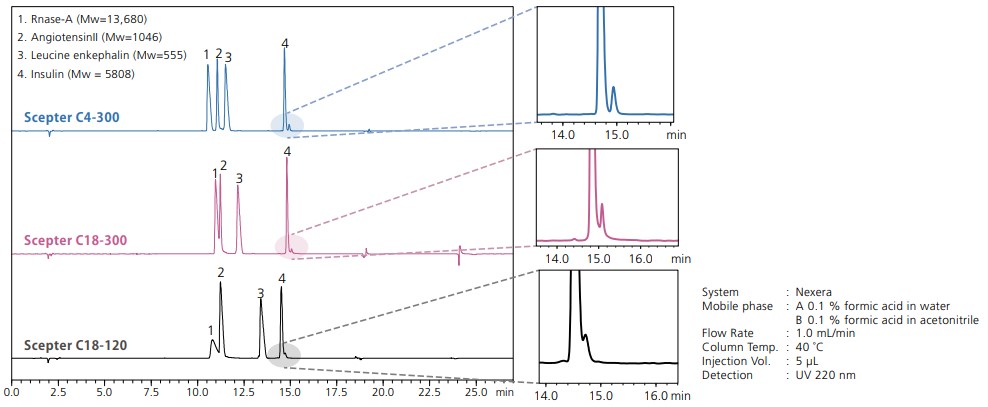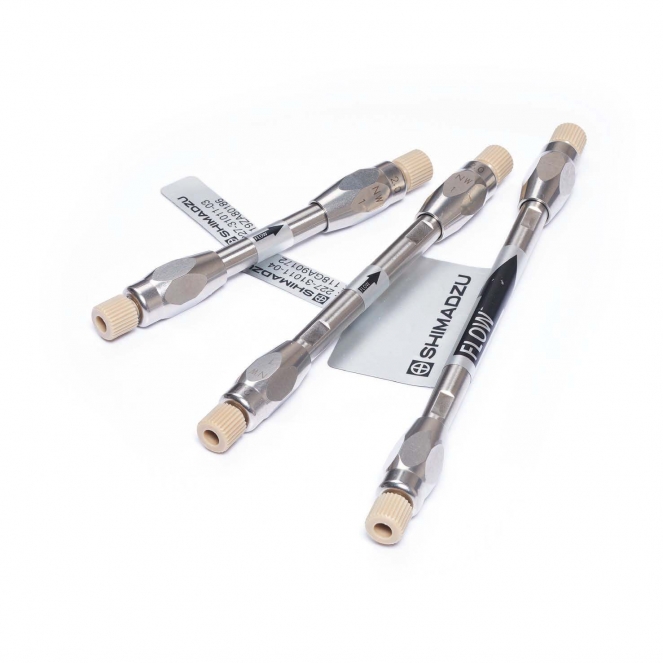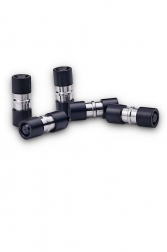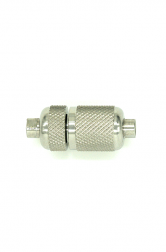Shim-pack Scepter C18-300, 5um, 3.0x75
Part Number: 227-31203-34
Column Name: Scepter C18-300
Particle size (µm): 5
ID (mm): 3
Length (mm): 75
USP: L1
Functional Group: C18
Mode: Reversed Phase
Type: Analytical column
Guard Column: 227-31207-09
Guard Column Holder: 227-31172-03
Pore size (nm): 30
End Capping: Yes
PH: 1 to 12
Pressure Tolerance (MPa): 45
Pack size: 1
Lead Time: 4 - 6 weeks
Shim-pack Scepter C18-300 is wide-pore organic silica hybrid reversed phase columns recommended for the separation of proteins such as monoclonal antibodies and mid-sized molecules such as oligonucleic acids and peptides that may not be retained on 100-120Å pore size columns due to size-exclusion effects. The organic silica hybrid base material is highly stable even at high temperatures under acidic and basic mobile phase conditions. Pore sizes are optimized for large molecular weight compounds and dispersed uniformly in the column, resulting in symmetrical peak shapes and increased resolution of antibodies and nucleic acids compared to a smaller pore size column. Shim-pack Scepter C18-300 is also effective for high-sensitivity LC/MS analysis, producing good peak shapes even under weak ionpairing conditions using a formic acid mobile phase.
Pore Size-Dependent Selectivity
Shim-pack Scepter C18-300 has larger pore sizes than Scepter C18-120, a smaller carbon content, and a lower speci c surface area. As a result, Scepter C18-300 exhibits weaker retention compared to Scepter C18-120, making it suitable for applications aimed at reducing analysis time, and for the analysis of compounds that are strongly retained and may have inconsistent retention times on typical C18 columns.

Peptide Analysis Example
Shim-pack Scepter C18-300 and C4-300 made with 300 Å (30 nm) pore size packing material. The larger pore size is recommended for the analysis of mid-sized and large-sized molecules with molecular weights above 5000 to enable retention and avoid size-exclusion effects. This analysis of a mixed sample of four different peptides and proteins demonstrated good peak shapes and favorable separation of insulin and ribonuclease A due to the pore size that was large enough to allow proper diffusion of these large molecular weight compounds.












